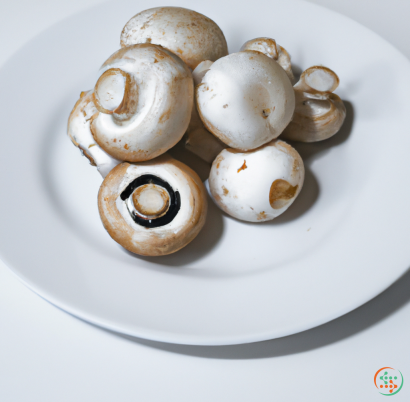Sugar Substitute (fructose)
and its health implications
Sugar substitutes have been around for several decades, but the popularity of fructose has recently skyrocketed with its purported health benefits. Fructose is a type of sugar that can be found naturally in some foods and is becoming increasingly common as an added sugar in products like soft drinks, jams, and confectionery items. In the US, it is estimated that fructose accounts for approximately 10-15% of calories consumed in the diet, and as much as 40% of calories consumed in some parts of the world.
So what is fructose? Put simply, fructose is a form of simple sugar found naturally in fruit, honey, and some vegetables. Unlike refined sugars like sucrose and glucose that are broken down in the body and absorbed quickly, fructose is absorbed more slowly. This slower absorption rate results in a lower glycemic index (GI). The GI is a measure of how quickly blood sugar levels rise after eating a certain type of food. Foods with a GI of less than 55 tend to be healthier, as they don’t elevate blood sugar levels as much or as quickly as foods with a higher GI. Fructose also has a low GI, which means it is often used as a sweetener in foods such as breakfast cereals, yogurts, and energy bars.
Though fructose has been considered a safer alternative to other sugars from a blood sugar and glycemic index standpoint, it has come under scrutiny for its other potential health implications. Recent studies suggest that a diet high in fructose can lead to health problems including obesity, diabetes, heart disease and liver damage. Fructose also contains no essential nutrients, so if you’re eating a lot of it, you’re not getting any of the beneficial vitamins, minerals, and dietary fibers that are found in fruits, vegetables, and whole grains.
In addition, because fructose is so sweet and high in calories, if consumed in excess, it can lead to weight gain. This is especially true if it is consumed in large quantities on a regular basis rather than consumed in moderation. For example, while drinking a glass of pure fruit juice may seem like a healthy choice, it still contains a lot of fructose and, if consumed on a daily basis, can lead to weight gain over time.
Furthermore, fructose has been linked to an increased risk of dental cavities. This is because fructose can stick to the teeth and create an ideal environment for the growth of bacteria, which can then lead to tooth decay and cavities. For this reason, it’s important to brush and floss your teeth after eating foods that contain fructose.
Finally, while fructose has a relatively low GI, it is still considered a “free sugar”, meaning it has little nutritional value and should be consumed in moderation. The World Health Organization recommends that adults should consume no more than 6 to 10 teaspoons of added sugar (which includes fructose) per day. Anything more than that can put you at risk for health problems, including obesity, diabetes, and heart disease.
Overall, fructose is a type of sugar that can be used as a replacement for traditional sugars, such as sucrose and glucose. While it does have some advantages, such as being quickly digested and having a lower glycemic index than other sugars, it also has drawbacks, such as an increased risk of tooth decay and potential health problems if consumed in excess. Therefore, it is important to use discretion when using and consuming fructose, as too much can be detrimental to your overall health.
Sugar and sweetness is an integral part of many dishes, desserts and drinks, but it has been said that too much of a good thing can have adverse health effects. As more people become aware of the potentially negative impacts of consuming too much refined sugar, fructose has began to emerge as a possible alternative. Fructose, also known as levulose and fruit sugar, is the sweetener present in most fruits and vegetables, as well as in honey and certain plants. The human body metabolizes fructose differently than glucose, which is the main energy source present in refined sugar. In addition, it is often included in processed foods and beverages as a sugar substitute. With its gentler sweetness, this sugar alternative presents some advantages. But what is fructose, exactly? How is it created and how does it get to our dinner plates? Let’s take a look.
What Is Fructose?
Fructose is a natural sugar found in fruit and a few plants. It takes the form of registered units of sweetness called ‘dextrose equivalent’ (DE) — a measure based on a sugar’s sweetness, volume and calories to determine the equivalent amount of glucose. One molecule of fructose has three hydroxyl (OH) groups, which is why it is also known as 3-OH-glucose. While glucose is naturally derived from corn, for instance, fructose is derived from fruit processing.
Sugar Beet Process
To produce fructose from widespread crops such as sugar beets or corn, the plant goes through a series of processes. First, it is harvested and stored in a cool place to keep the sugar content intact. In the process of extraction, the shredded plants are fed into a diffuser to separate the fibers from the juice containing the sugar-containing solids. The juice is then heated and clarified by adding chemicals such as lime, sulphur dioxide and phosphoric acid. Afterwards, the treated juice is allowed to ferment, cooled and used to create a mash-like slurry. To separate the sugars, a centrifuge is used to extract syrup at high speeds, producing about 98% pure fructose. This process uses a lot of energy and is one of the most commonly used methods in large-scale industrial food production.
Find Other Carbohydrate Sources
Fructose isn’t just extracted from sugar beets, but also from a variety of other carbohydrate sources such as rice, wheat, potatoes and cassava. Rice starch is particularly preferred by manufacturers of nutrition products, while potato and cassava starches are commonly used in processed foods like cookies and canned goods. In comparison to grains, potatoes and starches contain much higher quantities of fructose. To extract the fructose, these starches must first be converted into glucose by breaking the chemical bonds within them. Then, the liquid is either concentrated and crystallized, or it is converted into fructose by adding an enzyme- conversion process known as isomerization.
Commercial Applications
Once the fructose has been extracted, it is sold in different forms, including items like high-fructose corn syrup. This type of fructose is 55% sweeter than sugar and is commonly used by the food industry in processed products, such as sodas, salad dressings and jams, to improve their texture and impart a sweet taste. Fructose can also be added to foods as crystalline, powdered or liquid. It is used in many products to reduce the amount of sugar and salt, without compromising on its taste.
Nutritional Analysis
It is essential to understand how fructose behaves in the body to assess how healthy it really is. For example, when compared to glucose, fructose is metabolized differently: while glucose is used by the cells to produce energy, fructose is mainly processed by the liver and converted into glucose, fatty acids and glycogen (a substance stored in the liver). Due to this difference, it is believed that including fructose in our diet may not cause the same spike in insulin levels as glucose-containing foods and drinks. In addition, dietary fructose has a low glycemic index, meaning it will not cause a sudden rise in blood sugar levels, thus making it ideal for those seeking sweeteners with low sugar content.
While fructose does have some advantages, research is conflicting on the full implications of fructose consumption. While moderate amounts of fructose may pose fewer risks than glucose, too much of it can cause weight gain, raised cholesterol levels and increased insulin resistance. Scientists suggest the current findings should be interpreted with caution, until more is known about fructose’s potential short- and long-term effects.
The Journey to Our Plates
Understanding how fructose is produced and what it can do for our body is of utmost importance. But how is this sweetener gets onto our dinner plates? Nowadays, fructose is present in many foods that are being served at home or in restaurants. Manufacturers dissolve this sweetener in beverages like carbonated drinks and energy drinks, as well as in bakery items like cakes, cookies and muffins. It is also added to recipes as a substitute to traditional sugar, thus reducing the total caloric value of the dish. Fructose is a product of fruit processing and can also be found in natural foods like honey, apples, pears, apricots and some root vegetables.
Final Thoughts
Fructose is a sugar alternative that has its place in the food industry. It is a product of fruit and vegetable processing, composed of registered units of sweetness called ‘Dextrose Equivalent’ (DE). Unlike more commonly-used sugars, fructose has a low glycemic index and is mainly processed in the liver instead of the cells. It can be found in food items like carbonated drinks, energy drinks, some fruits, honey, and bakery items. However, it should be consumed in moderation since research findings are inconclusive. When adding fructose to any dish, it’s best to keep an eye on the overall caloric value and try to get most of our natural sugars and sweetness from whole foods.
| Iron | 0.1 mg |
Daily Value 0.018 g
|
| Sodium | 0.012 grams |
Daily Value 2.3 g
|
| Copper | 0.22 mg |
Daily Value 0.9 mg
|
| Selenium | 0.6 ug |
Daily Value 0.055 mg
|
| Total Sugars | 92.7 grams |
per 100g
|







